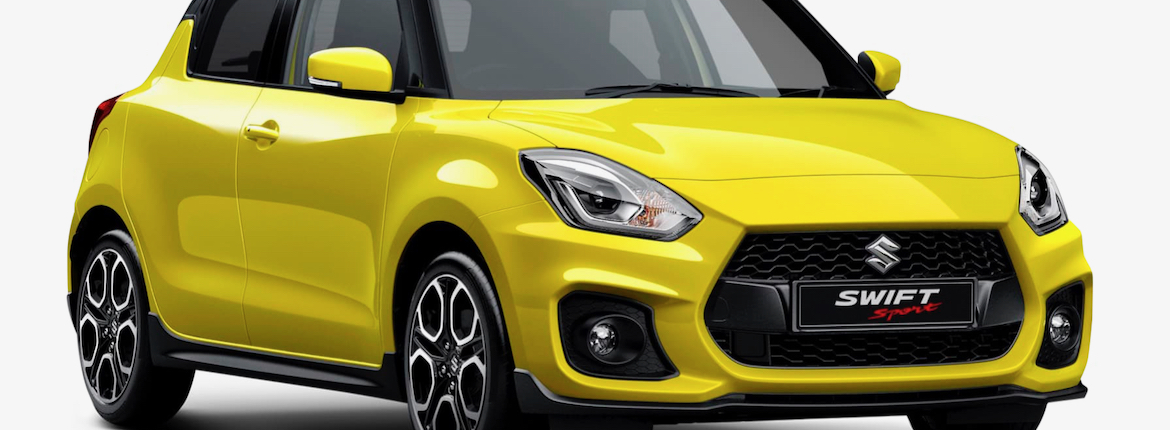The Suzuki Swift is super popular in both the new and used car markets. We’ve noted that the Sport models give a bit of extra ‘oomph’ to an otherwise practical run-around, and by all accounts, earlier models like the second-generation Suzuki Swift Sport from 2012 still have a lot to offer. So we decided to compare the current Sport model with the 2012 variant to see what has changed over nine years.
The 2012 Suzuki Swift Sport is well-equipped, with 17-inch alloy wheels and a cheeky little spoiler, helping the hatch to live up to its ‘sport’ badge.The front of the car has a long narrow latticed grill that looks more modern European than something from Japan. Low down, there are two deeply recessed front fog lights with distinctive black shields around the lamps.
The new Swift Sport has a similar design, but possesses a more aggressive look thanks to its lower, faux carbon fibre spoilers and finishes. It has retained the 17-inch alloys, but they are polished with black accenting and with added modern flare such as LED daytime running lights and projector beam headlights.
Although still petite, the new Swift Sport is 40mm wider and the wheel base is 20mm longer than the older model.
The interior of the 2012 Swift has stylish details including red stitching and the word ‘sport’ embroidered on the bucket seats. It has plenty of utility, too; drink holders abound and there is even a hook behind the passenger seat to hook your bags on to. The 2021 model has seven drink holders, but sadly the handy hook has gone.
The instrument cluster of the 2012 Swift Sport is quite conventional, but has steering-wheel-mounted controls for the stereo and cruise control.
Behind the steering wheel are large paddles; even in ‘Drive,’ these paddles can be used to shift through the gears. While analogue gauges still adorn the new Swift's dashboard, improvements include a 4.2-inch colour central display, enhancing the driver information experience and more features are accessible from the steering wheel, such as distance adjustment for Adaptive Cruise Control.
Storage-wise, the seats-up storage capacity of the 2012 model is only 210 litres; the new model has 265 litres.
Performance-wise, the 2012 model has a 1.6-litre engine, which produces 100kW and 160Nm and has a fuel efficiency rating of 6.1L/100km and a CO2 efficiency rating of 144g/km. We averaged about 5.9L/100km during our testing.
The engine of the 2012 model has an increased valve lift, revised intake and exhaust ports, a new variable intake system, improvements to the cooling system and, last but not least, a greater volume muffler which not only improves exhaust gas flow, but also gives a more meaningful sound to the exhaust.
We were sceptical about the new seven-speed CVT transmission back in 2012, but time has proven the unit to be robust and, in practice, it doesn’t significantly detract from the fun experience of the Swift Sport.
The new Sport model features a BoosterJet turbocharged engine which outputs 103kW and 230Nm; more than enough power for a car of this size. And it has an enviable 4.2:1 weight-to-torque ratio. While the fuel consumption is the same, the emissions have reduced marginally by 3g/km. The latest Swift Sport has reverted back to a conventional six-speed automatic, but a sporty, six-speed manual is also available.
Verdict
While the 2012 Suzuki Swift Sport will always have a place in our hearts, the latest Swift Sport is more fun than ever. One of the most significant changes, aside from the added torque, is a host of new safety features that elevate the latest Suzuki Swift Sport to the next level.
Thanks to its Advanced Forward Detection System, which includes safety features such as Dual Sensor Brake Support (DSBS), Lane Departure Warning, Weaving Alert, Headlamp High Beam Assist and Adaptive Cruise Control, the new model has a 5-Star ANCAP safety rating.
Reported by Ian Green for our AA Directions Spring 2021 issue




